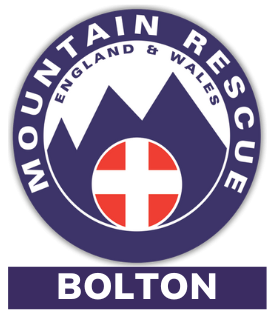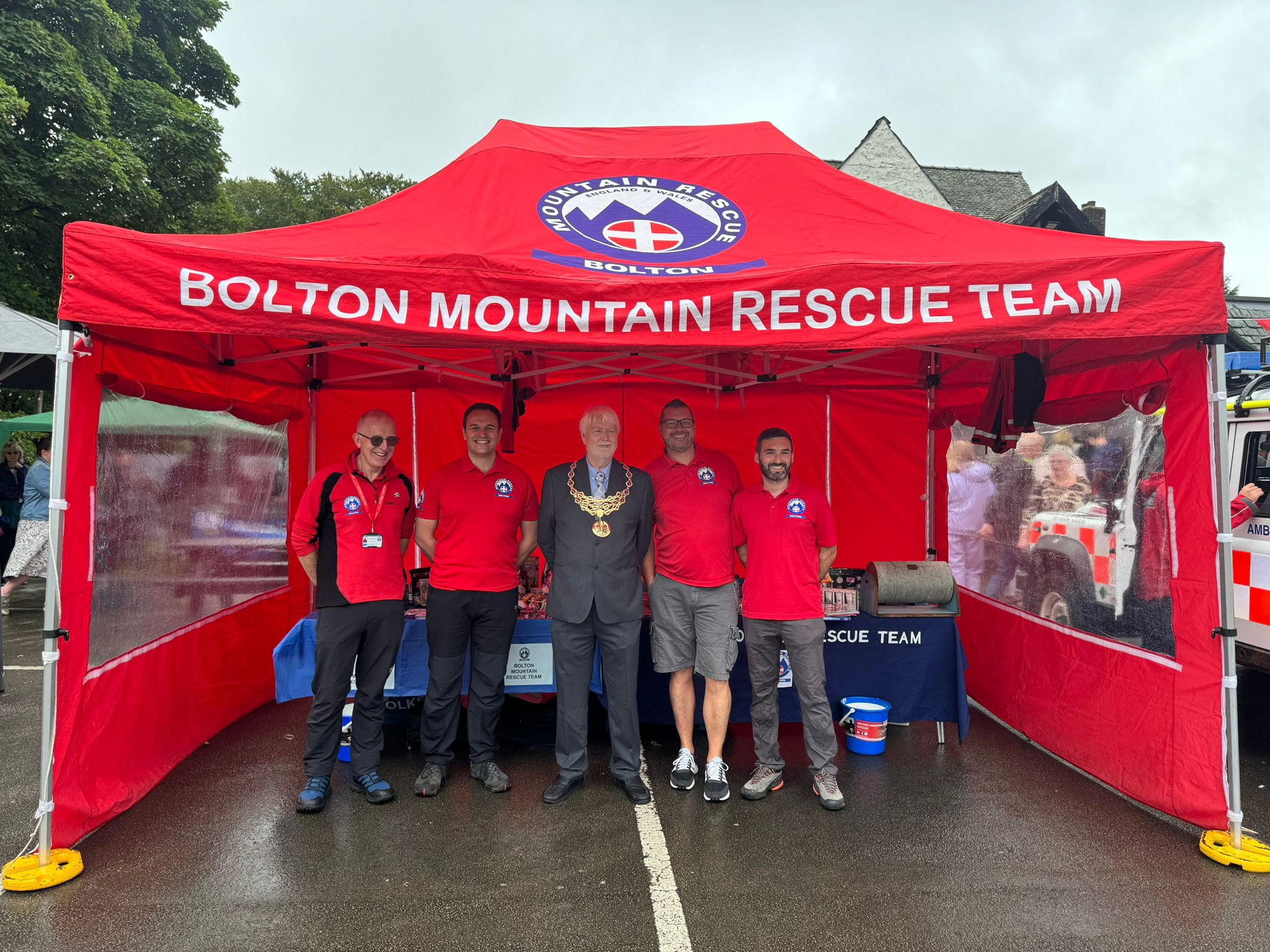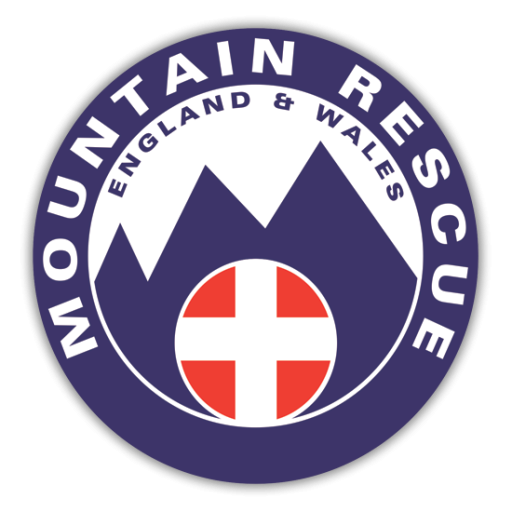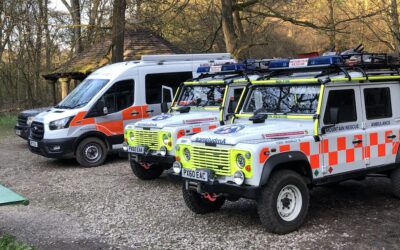This evening two separate parties of seven team members each, visited two of the three NWAS Emergency Control Centres. One group visited NWAS (Greater Manchester) Belle Vue Control, Manchester, with the other group visiting NWAS (Lancashire and Cumbria) Control at Broughton, Lancashire. (NWAS Merseyside and Cheshire, also operates an Emergency Control Centre)
The groups were made up of both experienced and new team Call Out list members, with most never having visited the Ambulance Emergency Control Centres.
There follows below an account of the visit to NWAS (Lancashire and Cumbria) Emergency Control Centre by team member and Equipment Officer Communications and Lighting, Paul Brain.
Seven of us travelled to NWAS (Lancashire and Cumbria) Broughton Emergency Ambulance Control in our BM4 Land Rover MR ambulance vehicle, and were greeted by the Control Room Manager for the shift, Kath Southworth, who kindly gave us a tour of the centre.
As soon as we had walked through the door, Kath explained that the building works on a shift basis, manned 24 hours a day. There are 4 separate shift groups who are scheduled on a rota in rotation for each of the 12 hour shifts. The Broughton Centre controls Emergency Ambulance and Rapid Response Vehicles for the whole of Lancashire and Cumbria.
Moving on to the training rooms, Kath explained all Emergency Medical Dispatchers (EMDs) have a months training before receiving ’live’ calls. All EMDs have to achieve 95% of the services target, such as answering the phone within 5 seconds and getting an ambulance to the patient within agreed time limits, which is dependant on the severity of the incident. All calls are audited and recorded and the EMDs and Dispatchers are regularly appraised on a sample of their calls.
Counseling is provided to the EMDs when required, as some of the calls can be harrowing. Since also taking on the function of handling emergency calls for the Cumbria region, Broughton has dealt with the 2009 Cumbria floods, the Keswick coach crash and the Cumbria shootings. (All of which involved Mountain rescue Teams from the Lake District area)
We next had the opportunity to view what happens when somebody calls 999 and asks for an Emergency Ambulance. We went to the EMD control room, where one of Kath’s colleagues explained what the job entailed.
As with everything these days, the job is computerised, although the centre can operate the old fashioned way with a paper based system, following a system crash.
We followed a live call, seeing the call come in, finding or confirming the address of the incident. Seeing what questions are asked, which depending on the answers determined what question was asked next.
Additional tools are available to the EMDs to test for irregular heart rates, breathing and tests for strokes to assist the diagnosis. In most cases the EMDs will remain on the phone until the Emergency Ambulance or RRV (Rapid Response Vehicle) arrives.
The software also had a mapping system which had the geeks in the team salivating. The map could be zoomed out to view the whole of the UK, right down to street and house number level. Each call is tagged on the map and all ambulance resources can be viewed using GPS technology.
Whilst we were getting this demonstration other live calls were coming in to the call centre, which allowed us to appreciate what a demanding job being an EMD is. For instance trying to calm anxious callers down to elicit the relevant information, and the difficulty of finding the location of an incident, especially when it’s not a residential address.
Next we moved to the Dispatchers Control Room.
Here the operators controlled the actual resources, the Emergency Ambulances, Rapid Response Vehicles, Air Ambulance and First Responders(and Mountain Rescue!). Each operator controls a geographical area, assigning Emergency Ambulances to the calls received by the EMDs next door. The Dispatchers normally start out as EMDs before ’graduating’ to being Dispatchers in this particular room.
The Dispatchers are Resource Managers, taking in to account which resources are available, how busy an area is, the severity of the casualty and the time it takes for Emergency Ambulances to reach an incident location. They then move the resources they have available to them around their geographical area. Even to our untrained eyes we could see there was a difference between an urban area such as Blackpool or Preston compared with Cumbria, where response times are more determined by the distances required to travel. The Dispatchers have to multi-task managing the resources at their disposal, and yes contrary to popular belief, there are men on the team doing this multi-tasking!
The question then moved to how Mountain Rescue are called out.
First question, how do they know when to call Mountain Rescue. This either is a ’gut feeling’ or is requested by the initial responding Emergency Ambulance. NWAS (Lancashire and Cumbria) can directly call out the Mid-Pennine Search & Rescue Organisation Teams, of which Bolton Mountain Rescue falls under, (and do such with the agreement of Lancashire Constabulary) whereas in Cumbria only Cumbria Constabulary generally have the authority to call on the services of the Lake District Mountain Rescue Teams, so any requests for assistance have to be passed through the Police.
After two hours it was time for us to leave. The time had flown by, Kath assumed we would be bored watching what the service does, the opposite was true, we were fascinated with what we saw.
A number of the Dispatchers and EMDs had asked for an opportunity to see what the capabilities are of the Mountain Rescue Service, to give them a better idea of what we do and what our capabilities are. We will be organising a joint training / awareness opportunity with regards to this in the future so watch this space…
The team would like to thank the staff of both NWAS (Greater Manchester) Belle Vue and NWAS (Lancashire and Cumbria) Broughton Emergency Control Centres for sharing their working practices with ourselves, which helps us to build an understanding of the whole process with regards to Ambulance Control calling on our services.



